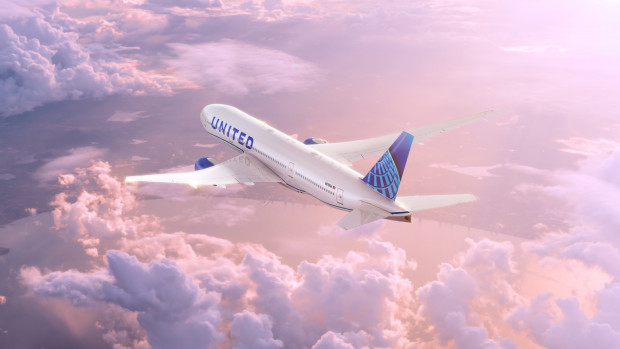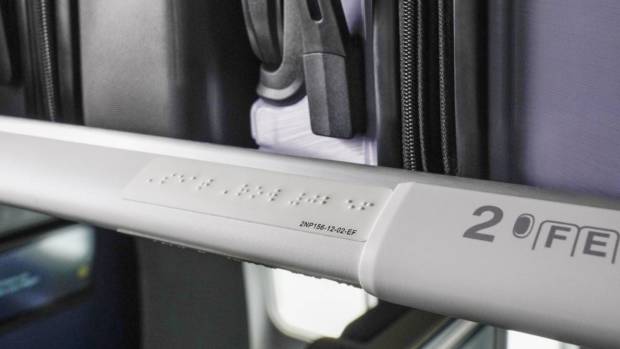
Over the last year, a number of airlines have been feeling pressure to improve accessibility for passengers with disabilities.
At the end of July, the Department of Transportation updated regulations to require single-aisle planes to also have accessible bathrooms while numerous campaigns have been calling for better handling of wheelchairs and other medical items and devices by baggage staff.
DON'T MISS: Protect Your Future Income With Disability Insurance
Another major industry move occurred when, on July 27, United Airlines (UAL) -) announced that it would install Braille signs in almost all of its aircraft by the end of 2026.

United Airlines
Braille Lettering To Be On Most Planes By 2027
Designed for visually impaired people, these will include placards labeling aisles and rows as well as signs showing the direction of the lavatories. The Chicago-based airline has been working on the placards in consultation with the National Federation of the Blind and the American Council of the Blind and has already added the signs to about a dozen planes.
The rest will be rolled out by 2027 with the exception being regional jets under the United Express brand which may take longer to retrofit. New planes will automatically have the signage while existing ones will be gradually retrofitted.
"We want to have the most consistent experience," Mark Muren, a United managing director in charge of the initiative, told airline industry website The Points Guy. "That's something we're working very closely with our partners on, and that they're very supportive of."
The goal, the airline said, was to provide a better experience for visually impaired travelers as well as be an early adopter of this push for greater accessibility — while airlines have different levels of Braille options, no other major airline has committed to having it on all aircraft to date.
Numbers from the Centers for Disease Control show that over one million people in the U.S. are legally blind while 6 million have some form of vision loss.
Approximately 10% of those classified as legally blind are able to read Braille and, according to United, the airline is also working out ways to include signage for those who cannot — such as raised lettering.
'Those Small Things That Don't Impact As Many Customers'
"Those last few feet on the plane they probably have to ask for assistance or be really good at counting — and know we don't have a row 13 on some of our planes," United Chief Customer Officer Linda Jojo told the Washington Post. "We just realized that while there's those big things we can do, there's some small things that maybe don't impact as many customers."
Such small changes have generally helped airlines get good publicity as well as reach a group of clients before competitors. In November, the heads of most of the country's major airlines came together to pledge greater accessibility for their travelers as well as set up an advisory board to routinely push for improvements.
"Passengers with disabilities represent one of the fastest growing traveler segments, and we recognize the importance of facilitating a safe, seamless journey for them," the letter which was signed by the chief executives of United, Delta (DAL) -) and American Airlines (AAL) -) among others reads. "We recognize the need for a specific commitment to remove barriers to safe, accessible air travel."







